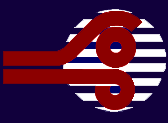|
|
- What is the average fuel flow of an Albatross
- Cruise fuel flow is generally about 110GPH total.
- Takeoff & Climb fuel flow can be up to 200GPH total with the Mixtures Rich
- Payload & Weights
- Dependent upon the outfitted empty weight. Approximately 20,800 lbs. for short and 22,500# for long-wing versions. Deluxe or "Yacht" interiors significantly add to the empty weights. Max TOW is 33,500 lbs. for both short and long-wing versions, so the empty weight determines the useful load. With full drop tanks, the acft. can hold approximately 10,000 pounds of fuel, limiting the maximum payload significantly. With full mains and floats, the payload can be as high as 5000# ("A" Model), or ten crew and passengers plus 3000# baggage and freight. Note that the G-111 Gross weight and performance is quite different fromt the standard HU-16 models due to certification limitations
- Range & Speeds
- Long-range flight planning is a complex process fully explained by charts in the Flight Manual. Basic performance charts show ranges up to 2800 NM with no payload. Speeds range from 140 - 160 KIAS "A" Model and 150 - 170 KIAS "B" Model at cruise, dependent on gross weight and power settings selected.
- For average weights and ranges, plan 150GPH to TOC and 110GPH cruise. In practical applications, drop tanks are not a viable option which reduces total fuel capacity to 1067 US gallons and provides a range of up to approximately 1000NM depending on reserve requirements. A realistic flight planning model at 110GPH is approximately 135-145K cruise for either model.
- For a sample range map centered on Papua New Guinea click here
- Runway Requirements
- Basic HU-16 sea-level performance charts show 2500 ft. to clear a 50' obstacle on Takeoff and 2300 ft. landing distance, clearing a 50' obstacle on the threshold at 33,500#. This assumes use of Max. Takeoff Power and best performance landing procedures. Normal accelerate/stop and balanced field length calculations are not provided for in the performance manuals. For general civilian performance, we recommend no less than a 3500' runway for experienced crews.
- Water Operations - Approximately 2000' of sheltered water are required for takeoff, less for landing. Water depths should be at least 5'. Open sea operations ARE NOT RECOMMENDED. Extensive US Coast Guard testing revealed that scheduled, or pre-planned, open water operations cannot be supported. In military use, JATO units were always used for rough water takeoffs. JATO units are not available to civilian operators.
- Support Requirements
- The Albatross is a large, complex aircraft designed to perform a wide variety of missions for several military services. It was also designed to be supported by a full compliment of maintenance and supply personnel, usually assisted by "Main Base Visits" or complete tear downs and overhauls, on a regular basis, often as regularly as every 1500 hours of flight.
- Successful civilian operators either enjoy the services of a dedicated maintenance facility or are accomplished mechanics themselves. The average FBO, even if licensed as a "Major Airframe and Powerplant Repair Facility", is not equipped to maintain an Albatross. Specialized tools and an extensive (and expensive) parts and manual inventories are required to be kept on hand to keep the aircraft operating.
- In the ideal world, a full-time mechanic/pilot would be employed to provide maintenance and co-pilot services to support an operating aircraft. In our experience, the aircraft must be operated regularly to provide reliable dispatch. That is expensive, given fuel and maintenance costs, but necessary. For travel, spares and tools must be carried on board, as much as 500 lbs.
- Crew Requirements
- The Albatross Civilian Type Certificates require two pilots for operation. The PIC must hold a type-rating in the aircraft, the SIC must have MEL&S Ratings and specific training in the aircraft. The PIC must receive a "Pilot Proficiency Exam" annually unless receiving another check ride annually in another two-pilot aircraft, in which case the Albatross PPE is required bi-annually. See the page "Crew Requirements and Training" page for details.
- Fuel / Oil Cost
- Fuel Burn - 110 GPH at cruise - Cost depends on local fuel prices
- Oil Consumption - 1-4 GPH - Cost depends on local prices
- Engine Maintenance
- Allow $175-200/hr. reserve for engine and propeller overhaul
- Engine TBO dependent upon operating practices - California Division of Forestry S-2 Tracker aircraft with regular maintenance in fire fighting role averaged >1100 hr. TBO.
- Overhaul for running engines costs $60,000 - $90,000, depending on quality of work.
- Airframe Maintenance
- Regular sheet metal, hydraulic, electrical and systems upkeep and repairs are needed to keep the aircraft operating. These costs are dependent upon the type of maintenance support provided, the quality of the previous work performed upon the aircraft.
- General Maintenance
- Large Aircraft Approved Inspection Program required by FAR.
- Must be approved by your local FSDO Principal Maintenance Inspector.
- SeaPlane Operations maintains a library of previously approved programs and has developed and completed the approval of Inspection programs for several operators
- Few STC installations are approved; Form 337 and DER approvals are required for almost any change to the aircraft.
- Parts Availability
- NOS, overhauled and "as removed" components are available for almost any unscheduled parts change; prices vary widely dependent upon scarcity, availability and quality of work performed.
| |

